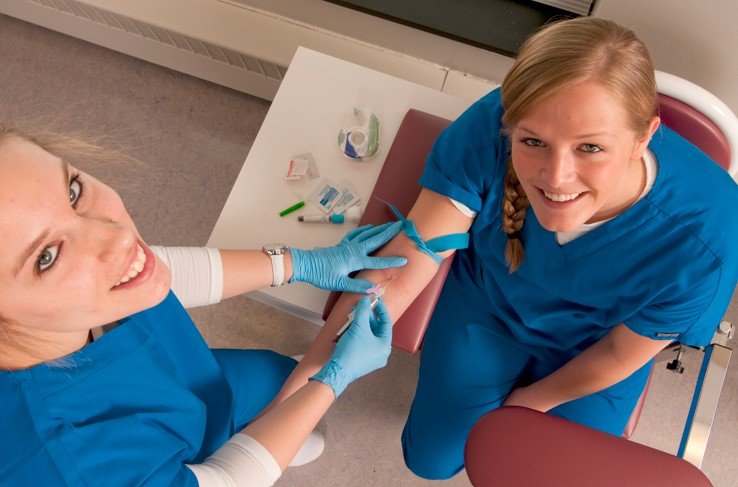The Importance of Equipment Maintenance in Hospitals: Best Practices and Challenges
Summary
- Hospitals in the United States must effectively track and document maintenance and repairs of medical equipment to ensure compliance with Joint Commission standards.
- Proper management of hospital supply and equipment is crucial for maintaining patient safety, reducing costs, and avoiding penalties.
- Implementing a comprehensive maintenance tracking system and training staff on equipment management best practices are key steps in meeting regulatory requirements.
- Lack of standardized processes for recording maintenance and repairs
- Inadequate training for staff on equipment management best practices
- Poor communication between departments responsible for equipment maintenance
- Difficulty in accessing maintenance records and service history
The Importance of Equipment Maintenance in Hospitals
Equipment maintenance is a critical aspect of hospital operations, as it directly impacts patient care, staff efficiency, and overall cost-effectiveness. Regular maintenance ensures that medical devices and equipment are functioning properly and accurately, reducing the risk of errors and malfunctions that could compromise patient safety. Additionally, well-maintained equipment has a longer lifespan, reducing the need for frequent replacements and saving costs for the hospital.
Joint Commission Standards for Equipment Management
The Joint Commission, a nonprofit organization that accredits and certifies healthcare organizations in the United States, sets specific standards for the maintenance and management of medical equipment. Hospitals must comply with these standards to ensure high-quality patient care and to maintain their accreditation status.
Challenges in Tracking and Documenting Equipment Maintenance
Despite the importance of equipment maintenance, many hospitals face challenges in effectively tracking and documenting maintenance activities. Some common challenges include:
Best Practices for Equipment Maintenance Tracking
To address these challenges and ensure compliance with Joint Commission standards, hospitals can implement the following best practices for tracking and documenting equipment maintenance:
Implement a Comprehensive Maintenance Tracking System
Investing in a robust maintenance tracking system that allows hospitals to record maintenance activities, track service history, and schedule preventive maintenance tasks is essential for effective equipment management. The system should be user-friendly, accessible to all relevant staff members, and capable of generating reports for compliance audits.
Train Staff on Equipment Management Best Practices
Providing training and ongoing education for staff members responsible for equipment management is crucial for ensuring that maintenance tasks are performed correctly and in a timely manner. Training should cover equipment-specific protocols, Safety Procedures, and documentation requirements to maintain compliance with regulatory standards.
Establish Clear Communication Channels
Effective communication between departments involved in equipment maintenance, such as biomedical engineering, clinical engineering, and Supply Chain management, is essential for coordinating maintenance activities, sharing information, and resolving issues promptly. Hospitals should establish clear communication channels and workflows to streamline maintenance processes and minimize errors.
Regularly Review and Update Maintenance Protocols
Periodically reviewing and updating maintenance protocols and procedures based on feedback, industry best practices, and regulatory changes is essential for ensuring that equipment maintenance remains effective and compliant with standards. Hospitals should conduct regular audits of maintenance records, identify areas for improvement, and implement necessary updates to enhance their maintenance program.
Conclusion
Effectively tracking and documenting maintenance and repairs of medical equipment is essential for hospitals in the United States to ensure compliance with Joint Commission standards, maintain patient safety, and optimize operational efficiency. By implementing a comprehensive maintenance tracking system, training staff on equipment management best practices, and fostering clear communication between departments, hospitals can meet regulatory requirements and provide high-quality care to patients.

Disclaimer: The content provided on this blog is for informational purposes only, reflecting the personal opinions and insights of the author(s) on the topics. The information provided should not be used for diagnosing or treating a health problem or disease, and those seeking personal medical advice should consult with a licensed physician. Always seek the advice of your doctor or other qualified health provider regarding a medical condition. Never disregard professional medical advice or delay in seeking it because of something you have read on this website. If you think you may have a medical emergency, call 911 or go to the nearest emergency room immediately. No physician-patient relationship is created by this web site or its use. No contributors to this web site make any representations, express or implied, with respect to the information provided herein or to its use. While we strive to share accurate and up-to-date information, we cannot guarantee the completeness, reliability, or accuracy of the content. The blog may also include links to external websites and resources for the convenience of our readers. Please note that linking to other sites does not imply endorsement of their content, practices, or services by us. Readers should use their discretion and judgment while exploring any external links and resources mentioned on this blog.
